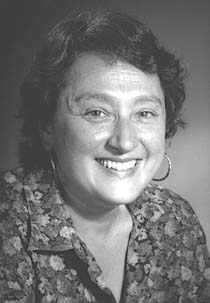UNIVERSITY OF MASSACHUSETTS

WILLIAM NORDBERG MEMORIAL LECTURE
LYNN MARGULIS
UNIVERSITY OF MASSACHUSETTS 
Cosmonauts and astronauts
are awed by the "blue marble," the cloudy, watery, living Earth from space.
A product of the lively imagination of British atmospheric chemist James
E. Lovelock and the international space program, the Gaia idea helps organize
vast quantities of information about our planet. The Gaia original
hypothesis states that within certain ranges the surface temperature, reactive
gas composition, alkalinity-acidity and oxidation-reduction states of certain
chemical elements (C, S, N) are modulated by the biota. The biota
(the sum of the flora, fauna and microbiota or biomass) comprises some
estimated 30 million life forms. The maintenance of diversity, especially
of gaseous metabolic products, is an absolute requirement for the Gaian
phenomenon. Current rates of element cycling by life are mainly determined
by growth, reproduction, movement and metabolism of the environmentally-embedded
organisms. Such gaian phenomena as rapid cycling and oxidation-reduction
changes of biologically important elements, i.e., C, N, O, S, P and H,
would never be expected on a lifeless planet (such as Mars).
Whether or not minibiospheres
(e.g., Winogradski columns, Biosphere II) can persist for geological periods
of time is unknown even in principle. The smallest ecologically stable
unit known so far is the 3.9 billion year-old “Biosphere 1”, i.e., Gaia.
The Gaia hypothesis, in spite of ignorance and denigration by detractors,
is generative of ideas that lead not only to new observations, experiments
and calculations but to new educational and research organizations as well.
Indeed, most scientists today refer to Gaia euphemistically as “Earth system
science”.